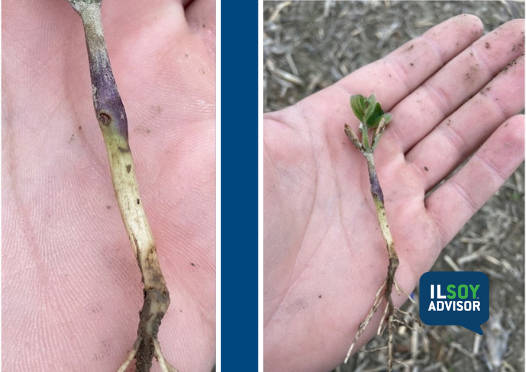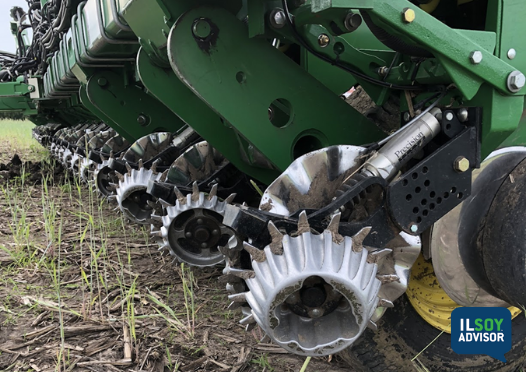ILSOYADVISOR POST
Managing Soybean Residue
Any grower who harvests soybeans recognizes two things: there is not much crop residue left on the surface and the soil surface is spongy compared to the cement-like hardness found after a corn crop.
Residue production: A 200-bushel corn crop produces about 5 tons of crop residue that coats the surface and armors the soil against erosion. It protects the soil and builds organic matter. That residue is rich in cellulose, hemicellulose and lignin; has a carbon to nitrogen ratio of 70:1; and decays slowly. Some growers choose tillage to break up and incorporate the residue into the soil to drive decomposition.
A 70-bushel equivalent soybean crop produces only about 1.5 to 1.75 tons of crop residue (1 ton per bushel). Considerably less than corn. This residue is richer in nitrogen relative to cellulose and lignin; has a carbon to nitrogen ratio closer to 25:1; and breaks down much more quickly. The decay of soybean residue releases organic carbon compounds that enhance soil tilth and lead to this sponginess on the soil surface. However, the combination of less residue produced and a low carbon to nitrogen ratio means that there will be a net loss in soil carbon after soybeans in the rotation compared to after corn.
Removing crop residues: Removing crop residues affects the soil organic carbon’s contribution to nutrient availability, soil water holding capacity and aggregate stability. This eventually affects infiltration, aeration and drainage. Excessive removal of residue will result in soil deterioration and declining yields. While the nutrients removed can be replaced, the functions of soil organic matter aren’t easily remediated or replaced.
Impact on water: Leaving crop residues on the soil surface reduces the effect of raindrop impact and runoff, while improving water infiltration and reducing evaporation. Crop residues also trap snow, keeping it evenly distributed across the field and resulting in more uniform soil moisture conditions and soil temperatures in the spring.
Value of soybean residue to the soil: Soybean residue keeps the soil protected, to a degree, over the winter, returns activated carbon back to the soil and improves tilth near the surface. Some growers also leave a windrow when combining and bale it for livestock fodder as bedding or feed. That residue has nutrient value. Based on the research, growers should leave at least 2 tons per acre on the field to maintain soil organic matter and protect the soil. That means every ton of soybean residue should remain on the surface.
A ton of soybean residue on average contains 10 to 12 lbs. nitrogen, 6 to 8 lbs. phosphate, 17 to 20 lbs. potash and 2 to 3 lbs. sulfur. These are nutrients that contribute both to soil microbial activity as well as to the next crop. To determine the value of these nutrients, just look up current fertilizer price per pound.
Value of soybean residue as feed: Soybean residue is a lower quality feed than cornstalks, sorghum and wheat residue because of the higher lignin content of the stem that isn’t easily digested by microbes According to the University of Nebraska forage analysis, soybeans “show a range of 35-38% total digestible nutrients (TDN) and 3.9-4% crude protein; these numbers are less than wheat residue. For comparison, forage tests from corn residue ranged from 47-54% TDN and 4.5-6.5% crude protein.” Soybeans even have less TDN than conventional grass hay, making it a poor quality forage or grinder hay.
While soybeans don’t leave much organic matter on the surface, that organic material does decay and contribute to soil health and the soil nutrient pool. However, removing it as a forage increases the risk of erosion while delivering a poor-quality forage.
Soybean agronomist Dr. Daniel Davidson posts blogs on topics related to soybean agronomy. Feel free to contact him at djdavidson@agwrite.com or ring him at 402-649-5919.





Comments
Add new comment